When I was a kid, our family got a roll of film developed every couple of months, and I remember getting the envelope of 4×6 prints back from the lab and hearing my mom remind me not to touch the prints.
“You’ll get fingerprints on them,” she’d say.
Not one to waste a good metaphor, as an adult, that’s all I really want from my photography: to make photographs with my fingerprints—my unique mark—all over them. I want my work to be more and more my own. We don’t all photograph for the same reasons, but I know this desire isn’t unique to me: I know that while most of us want to make images that are good or compelling, it’s more meaningful if those images are truly yours.
That’s photographic voice, and it’s not an easy thing to find (or create) in your work. But when you do, and you make a photograph or a series of images that feels like it’s really “you,” there are few feelings that compare.
Voice can come across in many ways in your images. For some photographers, it’s how you compose and your choice of subjects; for others, it’s a certain technique, like Valda Bailey’s abstracts and impressionism which I pointed you to last week (LINK). For some, it’s the kind of black and white treatment you use, and still for others, it’s the way you use or control colour. For most of us, it’s some particular combination of all of those and many more.
Voice is found in your choices about those things and the harmony between them, who you are, and what you’re trying to say.
The world of cinematography isn’t so different from still photography, but cinematographers seem to be much more conscious about some of these choices, specifically colour. I’ve spent the last year deepening my understanding of, or sensitivity to, colour, mostly because I felt that a photographer who uses colour (which I do as much as I also use monochrome) should probably be more aware of this profound tool for visual expression than I have been at times.
Colour is a big topic. So big that it can be really confusing, especially when you start breaking out colour wheels and talking about colour modes and spaces and the nitty gritty science of it. I’m less interested in these than I am in how colour makes us feel, how we read and respond to colour in photographs, and how we use it to express the subjects, ideas, or moods in our images.
To that end, I’ve got three ideas I want to offer up for your consideration where more creative and personal use of colour is concerned.
1. Become more aware of how colour makes you feel.
It’s got to begin with you because while it’s easy to make blanket observations about how red is a more passionate colour and yellow is a happy colour, there are a million different kinds of red, or yellow, and not all of them make us feel the same way.
A bright warm yellow is not emotionally the same as a light pastel yellow; they feel different. They pull our eyes differently, and they pull our thoughts and emotions differently as well. One shade of red feels passionate, another feels powerful, and still another—like a soft pink—might feel delicate and innocent, the opposites of passion or seduction or power.
Becoming more aware of the colours you actually see and how you respond to them as you react to the world and the photographs around you (as well as which colours and combinations you prefer and those you don’t) is a first step in using colour more intentionally and creatively.
Honing your sensitivity to colour will make you a much stronger colour photographer.
2. Become more aware of the qualities of colour.
Go back in your mind to the different associations I just mentioned about the colour red. There are warmer reds and cooler reds, softer reds, and brighter reds. We give them all kinds of names: fire truck red, garnet, scarlet, pink. All of them feel different. Here are a few more:
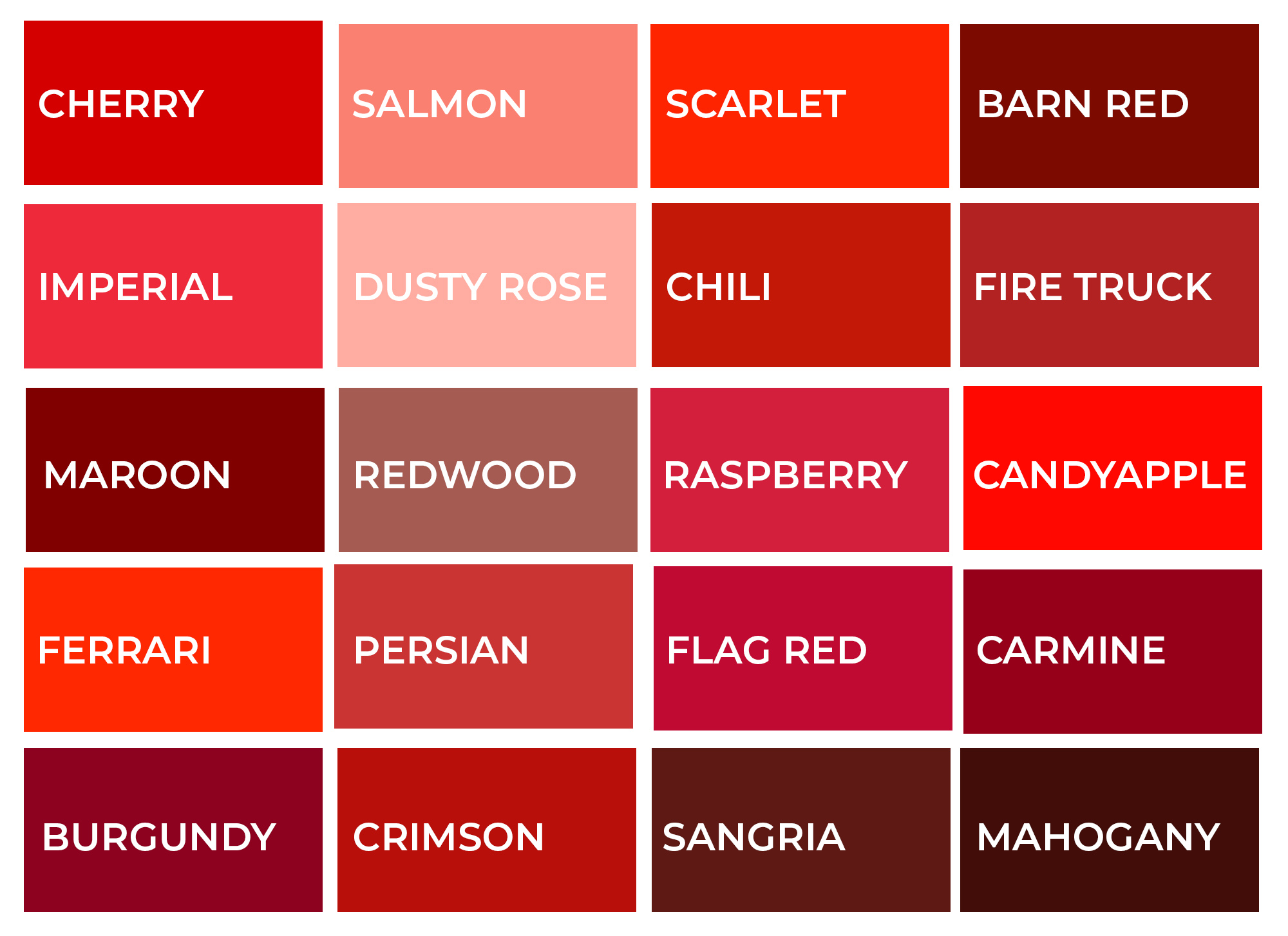
Being more aware of the full gamut of red’s possibilities and being more sensitive to how you feel about them is a good first step. But I think we need to go further. To do that, you need to understand and be thinking about the three qualities of colour that make Mahogany, for example, different from Dusty Rose.
Any one colour can be described with just three characteristics: hue, saturation, and luminance. That’s it. With these three handles, we can describe (and then control) any colour.
Hue is what we normally think of as colour. When we say “it’s green” or “it’s red,” we’re talking about hue, though not with any real nuance.
Saturation is how intense that hue is, as in bright green or dull green. In the grid above, Candyapple is much more saturated than Dusty Rose; it’s more intense.
And luminance is how we describe that hue in terms of how light or dark it is. Dusty Rose (see above) is a very light red in terms of luminance, and Mahogany is very dark. But either Dusty Rose or Mahogany could also be a little warmer or cooler (a shift in hue) until they become a different “colour” entirely or more or less saturated. How you feel about any combination of hue, saturation, or luminance, will differ, and so too will how the colours work together.
When you stop calling colours by their popular names and become more able to identify them according to the qualities of hue, saturation, and luminance, you’ll be better able to control any or all of those qualities and better control how the colours in your image work together and make the photograph feel. This leads me to the third idea: control.
3. Become more controlling with colour.
When you become more sensitive to how colours contribute to the feel or the messaging of a photograph, and you gain a growing sense of the qualities of those colours, you have the ability to control them in the photograph. “What should I do to the colour in this image?” isn’t a helpful question, but “How could I change the hue, saturation, or luminance in areas of my image to change how they work together?” is a great question. And any photo manipulation tool worth its salt, like Adobe Photoshop or Lightroom, has tools to give you that specific control.
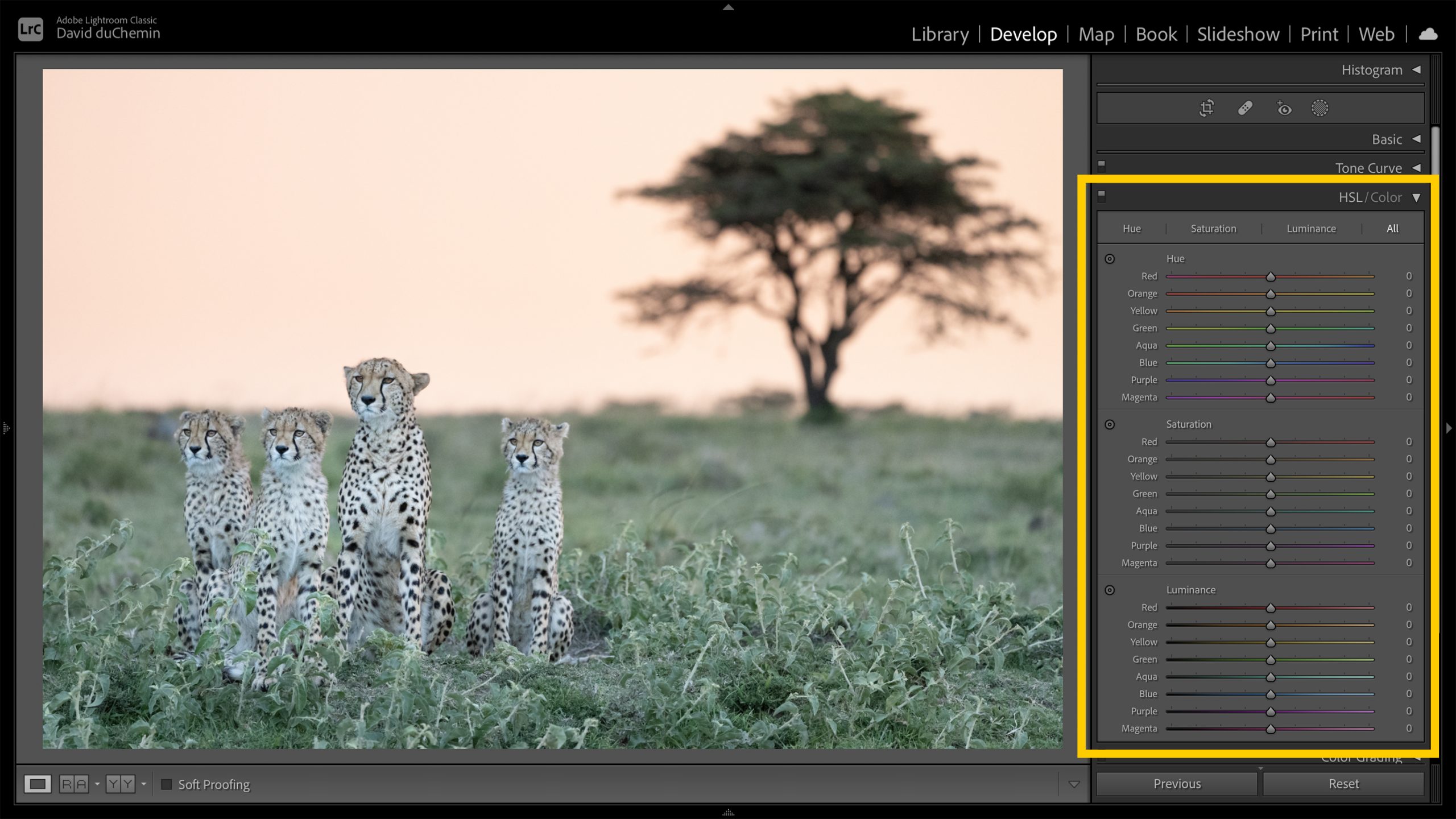
In Adobe Lightroom, shown here with HSL tools visible, each slider controls either hue, saturation, or luminance in the chosen colours on the left. This alone will change your control over colour forever.
Once you understand the qualities of colour in terms of hue, saturation, and luminance (HSL), you can use the HSL tools to push them around, making certain colours warmer or cooler (hue), brighter or less intense (saturation), and/or lighter or darker (luminance). Here are some examples using the HSL panel in Adobe Lightroom.
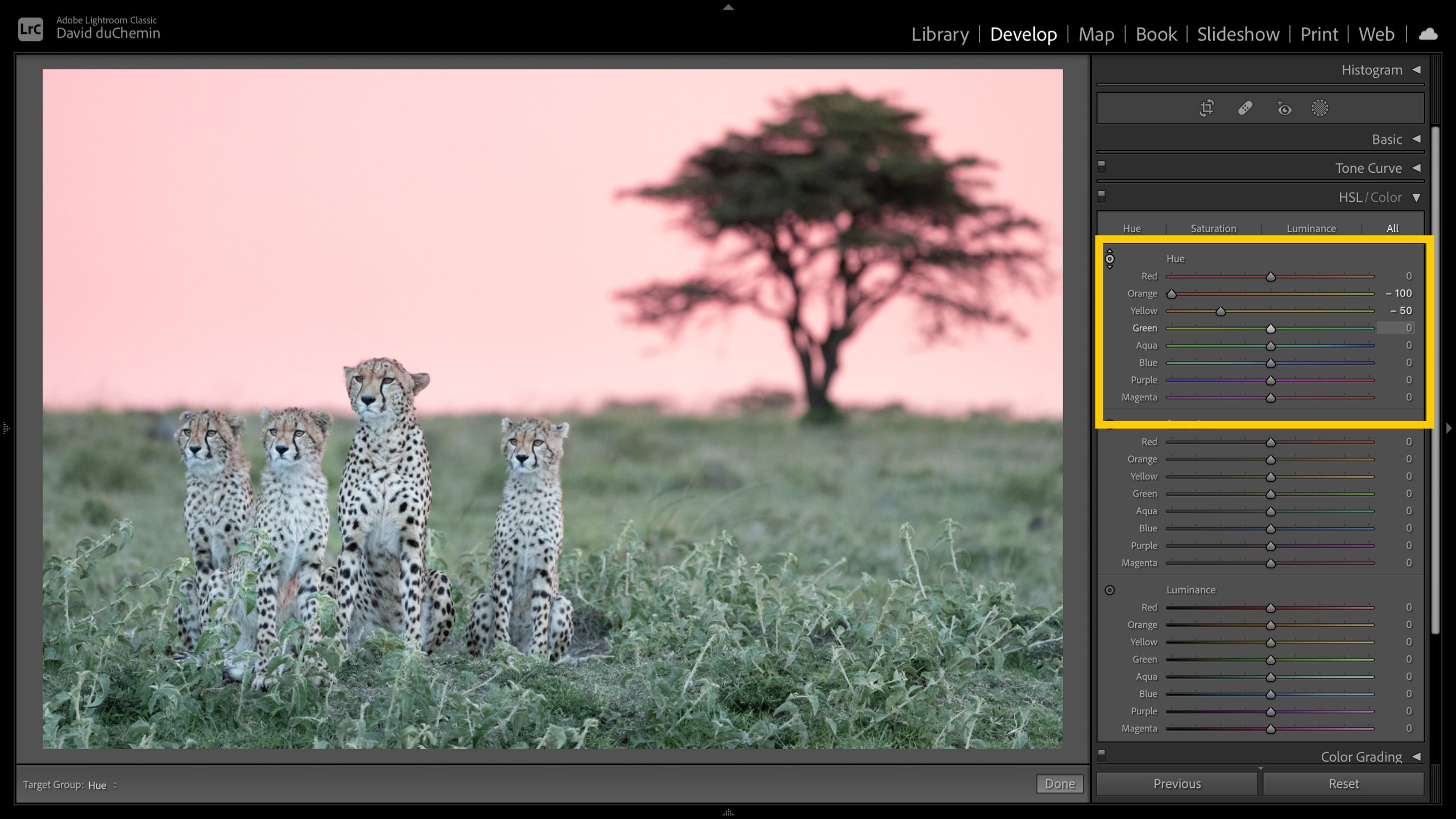
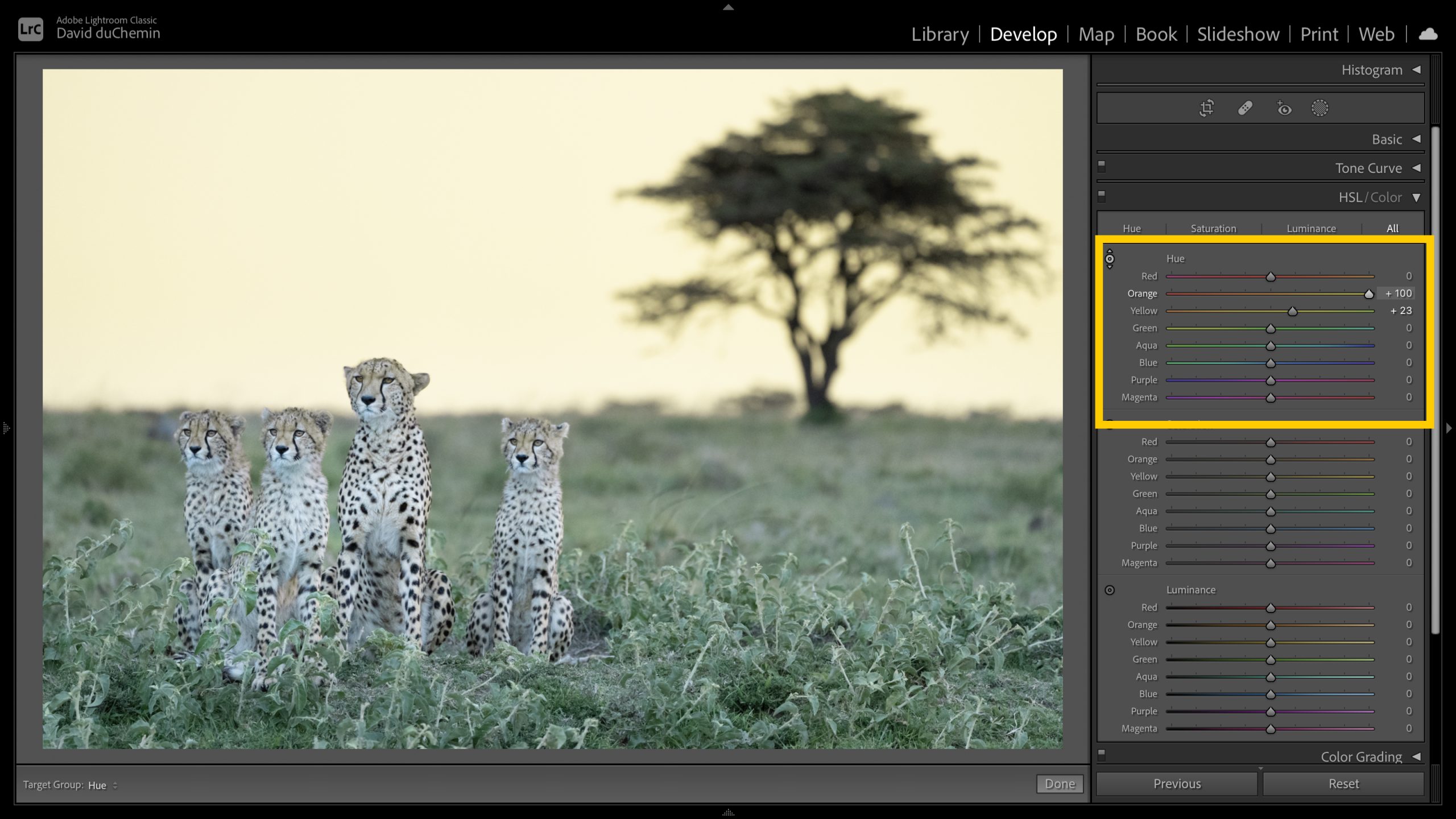
Hue.
In the Hue section of the HSL Panel in Lightroom I’ve adjusted the hue in the oranges and yellows more towards the reds in the top image and towards the greens in the second image.
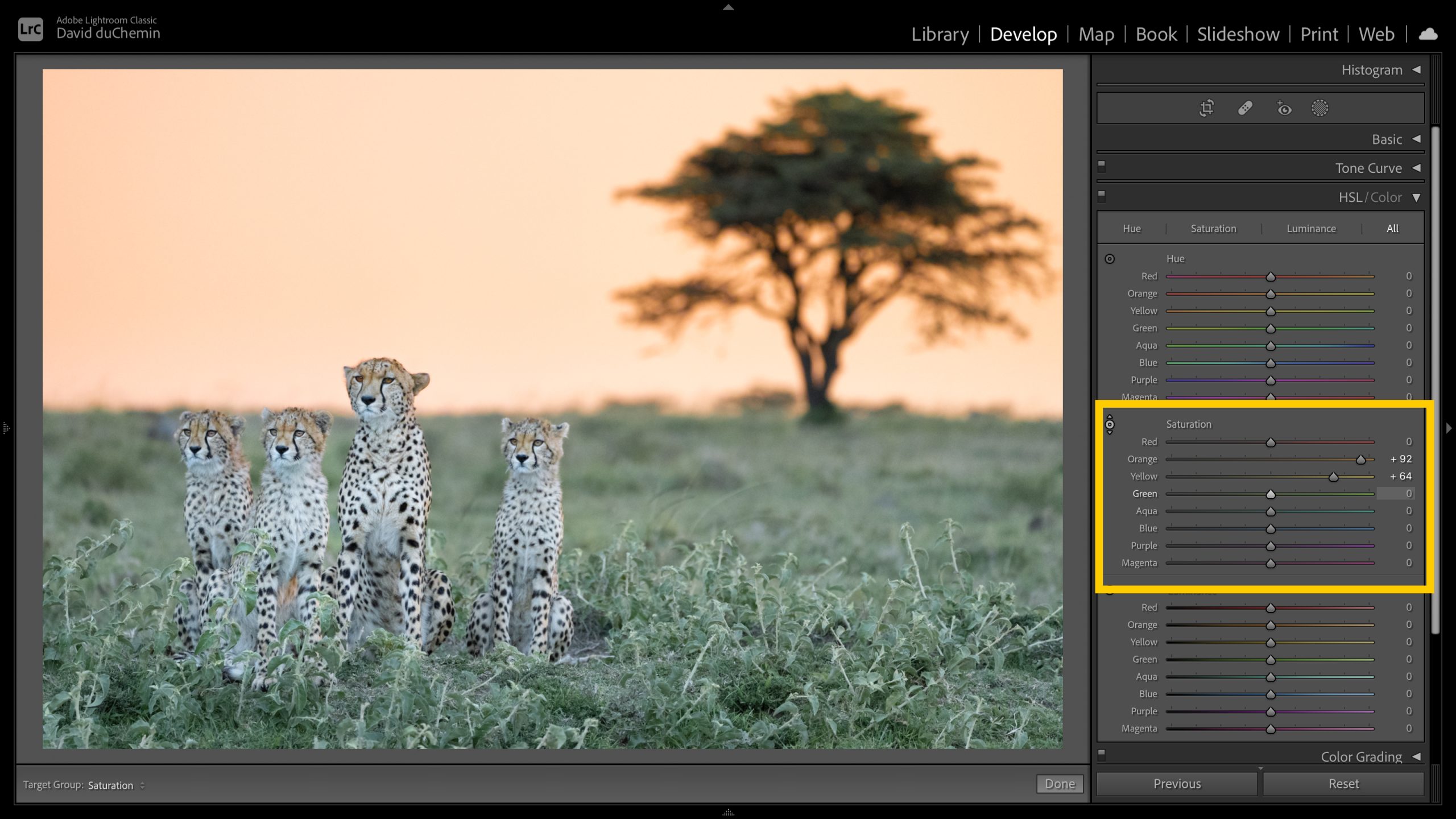
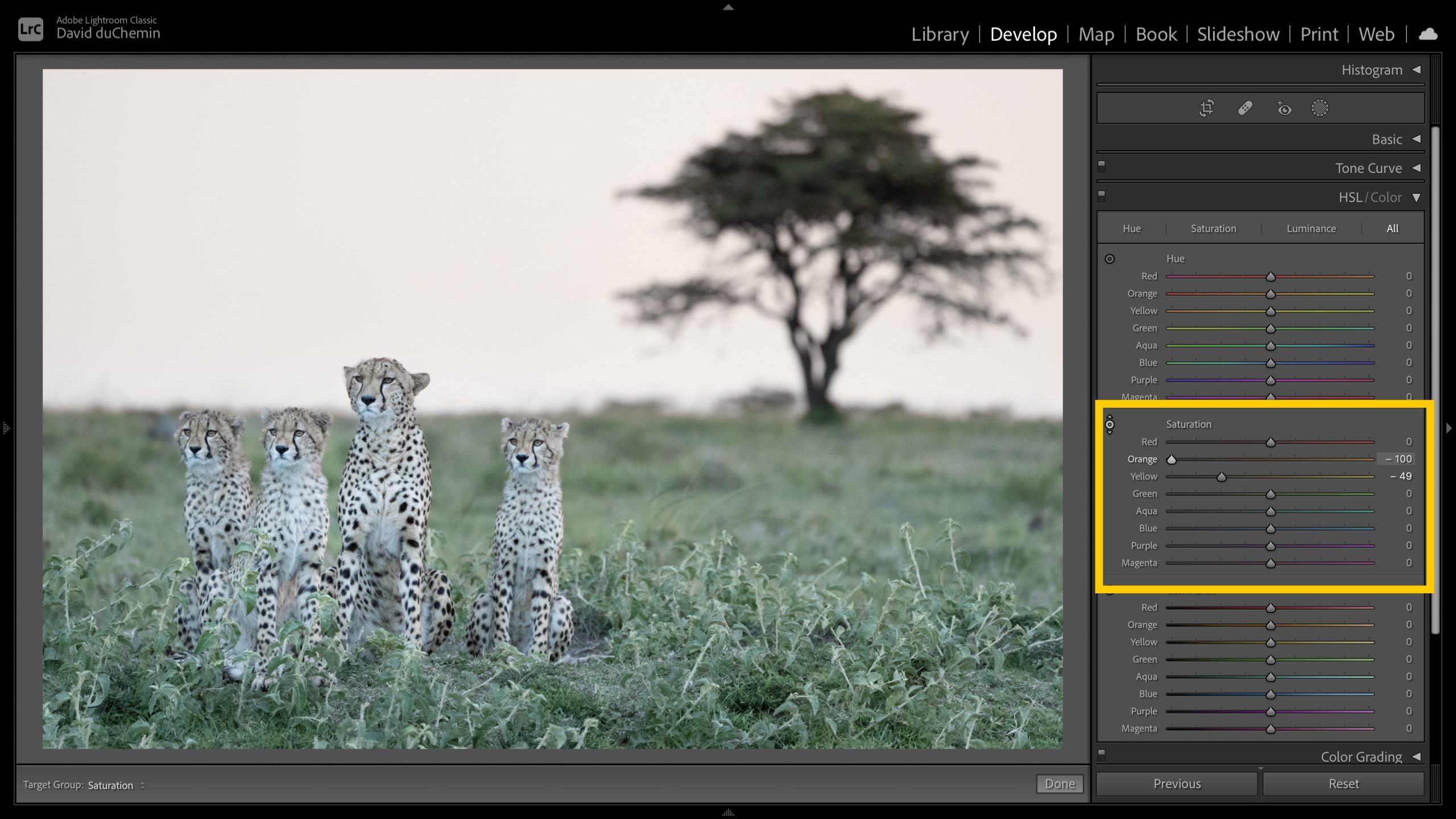
Saturation.
In the Saturation section of the HSL Panel in Lightroom I’ve adjusted the saturation in the same oranges and yellows towards more saturation in the top image and less saturation in the second image.
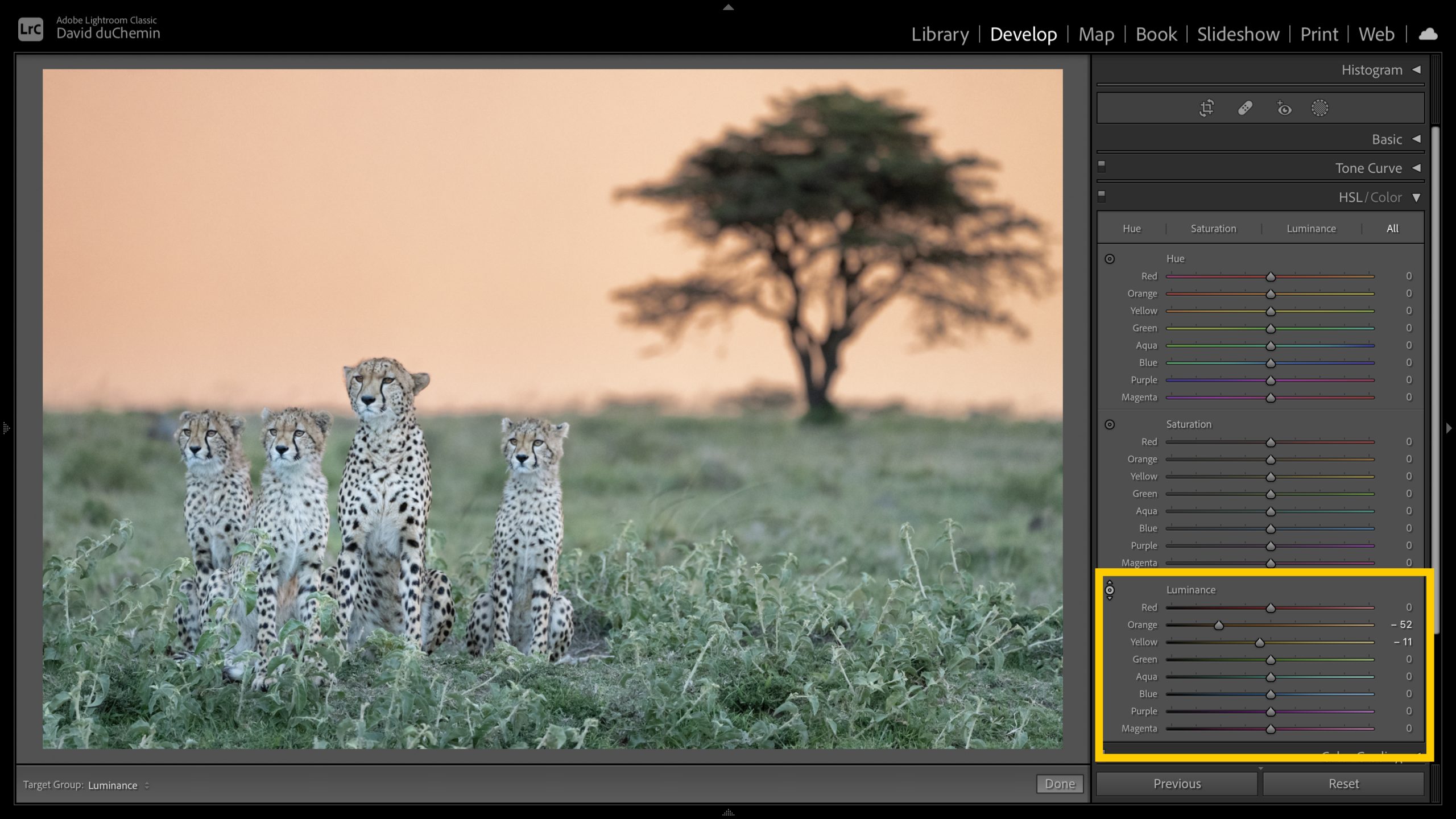

Luminance.
In the Luminance section of the same HSL panel, I’ve darkened the yellow/oranges in the top image and raised the luminance of the same colours in the second image.
There’s much more, of course. If you understand how colours complement each other, you can control the colour contrast or depth by gently nudging these tools one way or the other. If you understand, for example, how cyan contrasts more with orange than it does with yellow, you could use HSL tools to either nudge your cyans toward warmer blues (like violet, which complements yellow) or nudge your yellows toward orange.
Or, if you understand what makes colours work in harmony rather than in tension with each other, you can use the HSL tools to reduce that tension or visual competition by making one colour slightly brighter or more saturated while making other colours slightly darker or desaturated.
There is a lot to know about colour, and if some of what I just described feels a little fuzzy to you, that’s OK. It tells you there’s some room to grow in your use of colour, and I hope to help with that. But just these three ideas alone have changed my personal understanding of colour and of my own photographs, as well as the possibilities that development tools like Lightroom (or others) can offer to make my photographs more expressive—and more mine. I think it can do the same for you.
I’ve created something for you, and tempted as I am to show you now, I don’t want to overwhelm you. So next week I’ll share a 20-minute video for you that explores in greater detail the idea of the photographer’s voice and how your choices with devices like colour can help you create single images and bodies of work that get you closer to that voice. There’s more, too. As I said, I’ve been hard at this for a year, not just as part of my growth as a photographer but also in hopes that I can help you take some of your next steps as you continue learning to make images that aren’t only good, but truly your own.
For the Love of the Photograph,
David

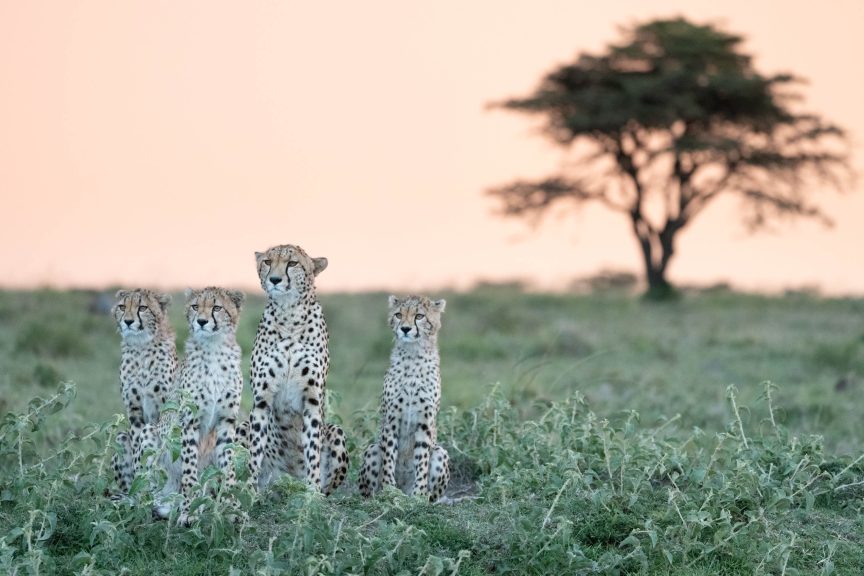
Comments
Thank you David. Your emails and courses always make me think about what I am doing and why. You are inspiring as a person and as a photographer.
Never had anybody describing, Hue, Saturation and Luminance so clearly. For wedding photography colour is so important and every wedding has a different shade and ambiance to it. I found colour always helped me to present each and every one of them slightly differently but still preserving my style. Thanks for sharing!
Hi David,
Just to say that I think this article is absolutely spot on. You are always articulate and you strike just the right note without being heavily didactic. You explain things clearly and you don’t overdo it. I have been wanting to know about the differences in these three aspects of colour for some time now and you have nailed it!
Thank you! Also looking forward to the video 🙂
Claudia
What a joy to receive your email about colour. I am a big fan of the film-maker Wes Anderson and his use of colour palettes make his films so distinctive and appealing. I have been trying to find out how some of these colouring techniques can be applied to still photographs – so I eagerly look forward to your video David. Thank you.
Hello David,
Thank you for another excellent article, you have an great writing style. I liked your writing so much, I bought “Photographically Speaking: A Deeper Look at Creating Stronger Images”.
Thank you! I’ll look forward to the video.
You’re welcome, Susan!
Hi David,
I have followed and enjoyed your writings for some time now, but just to say I have been so thoroughly enjoying, and being encouraged/challenged by, the direction your blog has taken over the past while. Thank you (and keep going)!
Regards,
Lawry
Thank you, Lawry. How lucky for us both that I seem to enjoy the writing as much as others seem to enjoy the reading. 😉
Great article David. Never thought of colours this way before.
Hi David, thank you for sharing your journey in photography with the idea of sparking an idea for me and helping me grow through your experience. I always enjoy your emails and they seem to come at the right pace, not too often, but spaced far enough apart to leave me appreciative of the message you bear, thanks again!
Thank you for that, Eugene!
An excellent article and the clearest explanation of HSL and how it affects changes in color that have read. I prefer color photography and I am look forward to your video. thanks Liz
I always look forward David as Design Philosopher but this how to technical approach was a welcome read. Thanks so much. So much to learn about this aspect of photography.
This is one of the things I love most about this craft, Brian. 35+ years and I’m still learning new things. There’s a challenge around every bend.
Thank you for this article. I need to think more about nudging my colors in one direction or another. When postprocessing I think about making the image look good and true, and not about the feelings or emotions it might evoke. I’ll try to pay more attention to the emotional aspect.
Cheers,
Gary
I think the idea of truth in an image is an interesting one. We often take it to mean “factual” and we talk in terms of “but is this what it really looked like?” when there are other kinds of true (for example: is it as emotionally true as it can be?) and our perceptions are so much more than just what the eyeballs take in. Everything is an act of interpretation, and so-called objectivity is a myth (at best). I think you might find a great deal of freedom if you learn to play with your colours, Gary. Even just paying them more attention, being more sensitive to them, can only help when you’ve got the camera to your eye. 🙂
As a young art student in the mid 60’s using color was just a dream and one of the reasons my BFA was in painting instead of photography. With digital photography, when I was finally able to assemble the equipment and print my images in 2006, I was overjoyed. There is so very much to learn about color…and printing…and presentation. All of this is in addition to capturing the image.
David, I’ m looking forward to your post!
Thanks, Janis! I can’t wait to show it to you. I mean, I can. But I wish I didn’t have to. See you Sunday morning!
I like your article a lot. Understanding how to manipulate color in photographs is very creative. I have seen some work on social media by photographers who clearly take advantage of your points in creating a color brand for their photos. One might argue that it can be limiting. Not every photograph should follow the same color changes to create a uniform look across many photos. I think that using color manipulation on a case-by-case basis allows us more freedom to express our feelings and emotions in each photograph, as you demonstrated here. Thanks for another fine article and for giving us more food for thought.
Always pertinent, intriguing and helpful suggestions. Thank you.
David,
Three of my students that you addressed last year continuing in photography. I often point them to your blog. Your entry this week will be perfect for them. Thank-you. Fred
What a delight to see your name here, Fred. I think of you often. A big hello to your students!
Good morning David, writing to you on a blustery day in Georgian Bay. Thanks for this inspiring article, it is my Sunday morning “Artist Date”. I’m reading Julia Cameron’s “The Artist’s Way”, which I highly recommend for any creative person out there looking for a nudge…or a major push… to get on with exploring voice. Your articles are a wonderful source for photographers, so THANK YOU. I’m going to dive into Lightroom now and edit images taken yesterday with an emphasis on colour values.
Thank you, Karen! Waving at you in Georgian Bay from Nanoose Bay. I love Georgian Bay and can only imagine you sitting there in the middle of an A.Y. Jackson painting, the wind whipping over the white pines and slabs of rock. Fall is the best time of year there. Best to you!
I am neither endorsing nor critiquing the work of photographer Ken Rockwell but if you want to get an idea of voice through extreme colour usage – check out his work. He seems particularly drawn to highly saturated colours which makes his work instantly recognizable.
LOL. I like your first sentence, Jannik. Very diplomatic. Yes, KR does like his saturated colours. 🙂
David! I’ve noticed over the past year or so that you seem to be developing your own color palette so I’m glad you’re writing about it. I’m looking forward to the video.
You mentioned cinematographers; who are the ones that are inspiring/influencing your work these days?
Cheers!
Scott
Hi Scott. Well it’s nice to know you noticed this. I was starting to wonder if it was all just in my head. 🙂 I take a pretty broad interest in cinematography, pulling lessons from everything, but I’ve got a bit of an aesthetic hard-on (forgive the mental image) for Wes Anderson these days. As a student of colour and composition I think there’s a lot unique and distinct about what he’s doing. I don’t know that he’s inspiring anything specific in my work, or influencing me, but he emboldens me to chase some of the tastes and preferences that make me uniquely me.
I have yet to get on the Wes Anderson train but now maybe I will. Any suggestions for the “one movie that must be seen,” especially in the context of color? For a reverse suggestion, I really enjoyed the cinematography of Atomic Blonde. Each scene seemed to have its own palette. That movie is “action-packed,” which is another way of saying it’s violent. But in a comic book kinda way. Just so you know. Cheers!